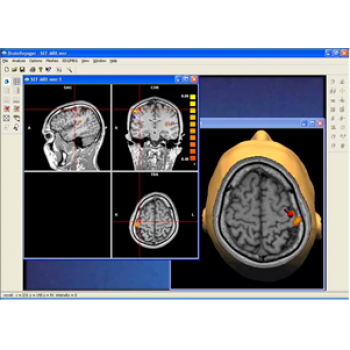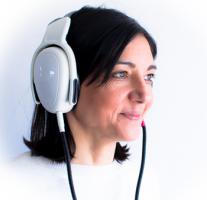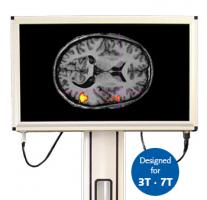Analysis and Visualisation Software / BrainVoyager QX
BrainVoyager QX

BrainVoyager is the "all-in-one" solution for brain imaging research enables analysis and visualisation of functional and structural magnetic resonance imaging data.
- Highly flexible data processing on raw data
- Comprehensive set of analysis and visualization tools.
- Beautiful visualisations of obtained results.
- Used in more than 500 research groups worldwide, it is known for its high processing speed and interactive, user friendly interface.
- Cross Platform – use your preferred operating system and exploit existing hardware
- Fully open programming interface for advanced users
- Bidirectional connection with BESA (Brain Electrical Source Analysis) allows easy integration with EEG and MEG data.
Guide Price: £4650
SKU: N1600


Can I try BrainVoyager out before I purchase it?
Yes, Cambridge Research Systems can send you a fully-functional Trial version of BrainVoyager QX , which you can use to analyse your own data for 30 days. A Demonstration version is also available, which you can download now and use to investigate all the core features using the supplied data set.
Technical Support FAQ
How do I import my data into BrainVoyager?
How do I interpret BrainVoyager file names?
What do the 3d motion correction plot colours mean?
Which video card should I buy to get the best performance from the BrainVoyager Surface module?
How do I get a Site Key to unlock the BrainVoyager Trial version?
1. How do I import my data into BrainVoyager 2000?
BrainVoyager includes a New Project Wizard, which will help you to create one of three supported project types. If you have any problems importing your data, please email our BrainVoyager staff scientists with information about: the data file format, the scanner manufacturer and model number, and the acquisition software revision number. If necessary, they will provide you with a username and password so that you can access our FTP server and upload a sample data file for further inspection.
2. How do I interpret BrainVoyager file names?
BrainVoyager automatically saves the results of data preprocessing into new data files. The files are named according to the types of preprocessing which have been performed. An abbreviated description of each step is appended to the base file name as described in the table below.
File Name Description
_3DMC_ 3d Motion Corrected
_pp_ 2d Temporally Smoothed
_FTS- 3d Temporally Smoothed e.g. "_FTS-3-126" is frequency domain temporal smoothing with high pass of 3 cycles and low pass of 126 (note: not available from GUI )
_FSS- 3d Spatially Smoothed in frequency domain e.g. "_FSS-1-14" is spatial smoothing with high pass of 1 voxels and low pass of 14 voxels
_MIA_ Mean Intensity Adjusted
_SCpoI Slice scan Time corrected. The letter p codes the scan interpolation: p=S signifies sinc interpolation and p=L linear interpolation. The letter o codes scan slice order: o=A for ascending and o=D for ascending e.g SCLD. An optional final character, I, indicates that the scan order was interleaved e.g. SCLAI (incorrectly described in help)
_SD3DSS 3d Spatially Smoothed in Spatial Domain e.g. SD3DSS4.00mm is spatial smoothing with a Gaussian kernel with FWHM of 2.00 mm while SD3DSS5.12px specifies a Gaussian with FWHM of 5.12 pixels
_LTR_ Linear Trends Removed
_THP Temporally High Pass filtered e.g. LTR_THP3c specifies a filter of 3 cycles in time course, THP1.00Hz specifies a filter of 3 Hz, and THP3.00cp is a filter of 3 cycles/point
_TDTS Temporally smoothed in the time domain e.g. TDTS0.3dp is temporally smoothed with a Gaussian kernel with FWHM of 3 data points, and TDTS0.9s is FWHM of 0.9 seconds
3. What do the 3d motion correction plot colours mean?
As motion correction preprocessing is performed, the degree of correction in each of the 6 degrees of freedom is plotted. The movements are coded as:
Colour Direction Units
Red X Translation mm
Green Y Translation mm
Blue Z Translation mm
Yellow X Rotation Deg
Purple Y Rotation Deg
Cyan Z Rotation Deg
4. Which video card should I buy to get the best performance from the BrainVoyager Surface module?
The Surface module requires a hardware-accelerated OpenGL video card with at least 16 MB of on-board graphics memory (32 MB or more is recommended). Currently the best price:performance ratio is provided by video cards which are based on the NVIDIA GeForce4 chipset, and you can get a solution based on the entry-level GeForce4 MX series from as little as GBP75 (about US$100).
If you have an older video card, you may be able to improve the performance of the Surface module just by updating your OpenGL drivers. Try:
ATI Technologies
Creative Technology
Diamond Multimedia
Hercules
Matrox
Number Nine
Nvidia
S3 Graphics
3dfx Interactive
3DLabs.
If you have a video card manufactured by a company which is not in the list, try the Goggle video card web directory.
5. I tried to install the BrainVoyager Trial version, but Windows produced an error message and could not find the file Setup_ck.exe
When you install the BrainVoyager Trial version from the BrainVoyager Evaluation Toolkit on a PC running Windows NT 4, Windows 2000 or Windows XP, you must use an account that has Administrator level privileges on the local PC.

If you do not use an account that has sufficient privileges, Windows will produce an error and the installation will fail.

If the installation fails, contact your local IT support team for help with the installation.
6. I tried to install the Key Server from the CD distributed with the BrainVoyager Evaluation Toolkit, but Windows produced an error message and could not find the file Setup_ck.exe
If you attempt to install the Key Server from the CD distributed with the BrainVoyager Evaluation Toolkit, Windows will produce an error and the installation will fail to complete.

The error is produced because Windows is attempting to write a file to the read-only CD. However, installing the Key Server is not usually necessary as this software component is installed during the main Trial Version installation.
7. How do I get a Site Key to unlock the BrainVoyager Trial version?
When you run the BrainVoyager Trial version for the first time, you will need a Site Key to unlock the software.

Send the Site Code produced by the Key Server to our BrainVoyager Sales team, and they will send you a unique Site Key which will unlock the software for 30 days. Run the BrainVoyager Trial version again using the desktop shortcut and enter the Site Key. Now press the Verify button to complete the unlock process. If you need longer than 30 days to test the analysis using your own data, just contact our BrainVoyager Sales team for a new Site Key to extend the evaluation.
8. When I run the BrainVoyager Trial version, Windows produces an error message about the CrypKey Server not running
If the Key Server failed to install or the Crypkey Licence service has not started, BrainVoyager will not run.

Run the program AdditionalInstallationTasks.exe, which you will find in the folder "Program Files\BrainVoyager" on your hard disk. This will silently install the Key Server and start the Crypkey Licence service. If you are running Windows NT 4, you can check the status of the Crypkey Licence service using the Control Panel Services applet. If you are running Windows 2000 or Windows XP you can check the status using the Computer Management MMC snap-in (right-click My Computer and select the Manage shortcut).


